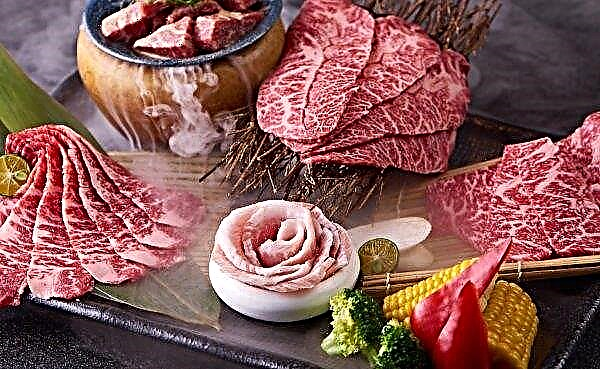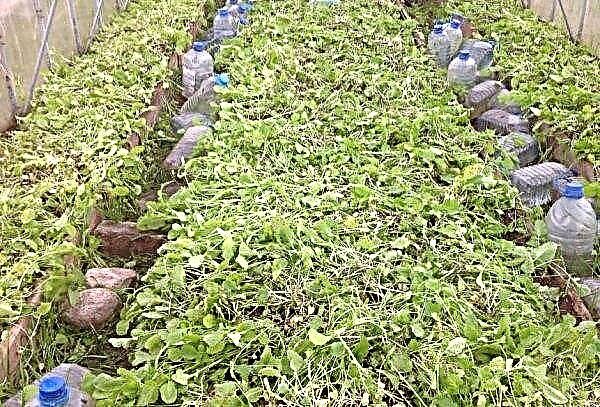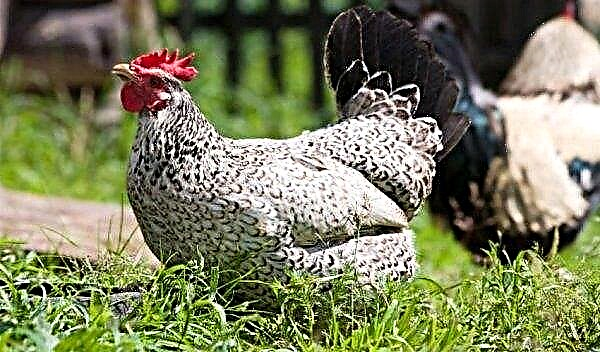Shop cyclamens are painfully responsive to changing growing conditions, which is why they are characterized by low survival. That is why many flower growers advise those wishing to acquire this flower to grow it yourself from seeds. Despite the difficulties that patiently have to overcome for six months, in the future you will get an unpretentious plant adapted to your home environment.
Short description of cyclamen
Cyclamens, or alpine violets, deserve attention due to their bright and long flowering, cold resistance and unpretentiousness. These herbaceous perennials represent the Primrose family.
They are characterized by:
- flattened root-bulb with a diameter of up to 15 cm with a single growth point (damaging it means destroying the plant);
- basal dark green heart-shaped leaves with a pearly pattern and leathery structure, about 25-30 cm high;
- original flowers, the bent petals of which resemble fantastic butterflies with pointed ovals of the wings.
 In the wild, the plant is found in Mediterranean latitudes and in northern Africa. But at the same time it does not tolerate dampness and high temperatures. The ideal environment for him is year-round coolness and moderate humidity. Today, taking into account the contribution of breeders, you can see terry and large-flowered varieties of cyclamens in soft pink, burgundy, white, lilac, beige, saturated purple.
In the wild, the plant is found in Mediterranean latitudes and in northern Africa. But at the same time it does not tolerate dampness and high temperatures. The ideal environment for him is year-round coolness and moderate humidity. Today, taking into account the contribution of breeders, you can see terry and large-flowered varieties of cyclamens in soft pink, burgundy, white, lilac, beige, saturated purple.Cyclamens are most suitable for indoor cultivation:
- European - characterized by medium-sized fragrant flowers with bright pink petals and dark emerald leaves;
- Persian - very popular in floriculture, represented by many varieties that differ in shade, terry and size of flowers.
Dates and optimal planting conditions
Seed reproduction of home cyclamen can be done regardless of the time of year. However, the February and March crops were best. A cool window sill from the western or eastern side and stable moderate watering during active growth are the main requirements of cyclamens in home care.
Important! Cyclamen differs from other indoor flowers in that it is not afraid of sudden changes in temperature.
The following recommendations will help to avoid fatal mistakes during seed cultivation of a plant:
- Make sure that the room temperature is + 10 ... + 16ºC. Under such conditions, the seeds will germinate 1-2 months. Keep in mind that this mode is relevant only until the first pair of leaves appears, when it is time to dive. Further, for a flower, the optimum temperature indicators are + 6 ... + 12ºC. If the thermometer rises above + 20 ° С, cyclamen may suspend the budding and die. That is why many flower growers, in order to prolong flowering, place the flowerpot in a cool and bright room.
- At all stages of growth, protect the plant from direct sunlight, drafts and excessive moisture - in the sunshine, young leaves can be burned, dampness provokes the development of fungal infections, and the through wind will inhibit the development of seedlings. However, this does not mean that the pot should be in the shade, and the room should not be ventilated. In contrast, fresh air stimulates biomass growth. Bright diffused light also contributes to this.

How to plant cyclamen at home: a step-by-step guide
According to experienced gardeners, growing cyclamens from seeds at home is a snap. Although this process will require preliminary preparation and knowledge of some subtleties. More on this later.
Choice of capacity for landing
It is recommended to sow the seeds of alpine violets in separate containers. If you prefer individual pots, then seedlings do not need to be replanted until their root system fills the entire container. It is better to use a container with a diameter of 8 cm for sowing. In case of planting seeds in boxes after the appearance of 3-4 leaves on seedlings, you will need to pick young cyclamens. At the same time, select small containers so that a 2-3-cm-thick layer of soil separates the bulb from the walls. In large containers, cyclamens practically do not bloom.
Did you know? Pigs are happy to eat cyclamen tubers, which is why these flowers got the alternative name “pork bread”.
Tillage
The soil for seed reproduction of cyclamens should be nutritious, loose, well-permeable to moisture and air. For this purpose, they usually use purchased soil mixtures for flowering crops or independently prepare a substrate from equal parts of river sand, peat, deciduous and garden land. Regardless of origin, the soil should be disinfected 14 days before the upcoming sowing, eliminating the risk of infection of planting material. The following methods are suitable for this:
The following methods are suitable for this:
- watering the earth mixture with a solution of potassium permanganate (the liquid is diluted in a proportion of 0.5 g per 3 l of water at room temperature);
- scalding (boiling water is generously poured over the prepared substrate, after which it is allowed to dry);
- roasting (the soil is spread in a thin layer on a baking sheet and for 5 minutes placed in an oven preheated to + 180 ° C, then allowed to cool).
Selection and preparation of seeds for sowing
For seed propagation, it is better to independently harvest planting material. Do this after the seeds have completely dried by shaking them. However, in order to obtain seeds, it is necessary to pollinate buds during the flowering of cyclamen. To do this, in the morning using a brush to transfer pollen from one flower to another. The procedure is suitable for plants of different varieties. In order to consolidate the result, it is advisable to repeat it several times, followed by subsequent dressing with potassium sulfate.
Did you know? The ancient Romans believed in the ability of cyclamens to protect against the evil eye.
If there are no cyclamens in the house, then their seeds are bought in specialized garden centers. At the same time, it is important to choose the products of well-established manufacturers. You should not buy seeds from unfamiliar and little-known suppliers. You can check the quality of planting material at home using saline. To prepare it, you need to dissolve a tablespoon of table salt in a glass of water. In the resulting solution, it is necessary to throw the seed material, while the seeds that have surfaced on the surface are considered unsuitable for planting and must be removed. Before sowing, planting stock is soaked for 24 hours in a growth-promoting aqueous solution. It is prepared using the preparations "Emistim", "Kornevin", "Ecosil", "Zircon" or "Epin-Extra" in the proportion of 4 drops per 100 ml of water. Alternatively, baker's yeast or liquid honey can be dissolved. It is important that the planting material is swollen, only then will it reach its pre-planting readiness. However, in the process of soaking, it is necessary to monitor the quality of the liquid, eliminating the risks of the emergence of a putrefactive environment.
Before sowing, planting stock is soaked for 24 hours in a growth-promoting aqueous solution. It is prepared using the preparations "Emistim", "Kornevin", "Ecosil", "Zircon" or "Epin-Extra" in the proportion of 4 drops per 100 ml of water. Alternatively, baker's yeast or liquid honey can be dissolved. It is important that the planting material is swollen, only then will it reach its pre-planting readiness. However, in the process of soaking, it is necessary to monitor the quality of the liquid, eliminating the risks of the emergence of a putrefactive environment.
Sowing technology
When the container for planting, soil and seeds are ready, you can start sowing.
This process is carried out according to the following algorithm:
- Fill the bottom of the tank with a 2 cm thick drainage layer, then pour the disinfected substrate to the top. Its thickness should not be less than 7 cm.
- Moisten the ground and make furrows with a depth of 1.5–2 cm in it. Carefully lay the prepared seeds in them, observing a distance of 3 cm. Sprinkle with fresh, moist soil on top.
- Cover the container with polyethylene and place it in a shady cool place, and when purple loops appear on the surface of the soil, remove the shelter and move the container to the area with diffused light. Typically, cyclamen seedlings appear in the form of a small leaf covered with a skin from the seed. Over time, it disappears on its own. If you see that this process is being delayed, and the seed peel interferes with the development of the sprout, remove it with tweezers. In this case, it is important to exercise special caution, because with the slightest damage the seedling will die. For seedlings, ventilate the room and monitor the soil moisture, but do not overfill it.
Video: growing cyclamen from seeds
What needs to be done after emergence
The timing of the appearance of the first sprouts depends on the variety of the selected cyclamen and can vary from 1 month to six months. In the future, seedlings of any variety are characterized by slow growth, which is associated with the growth of tubers. This process can take about 3 months. It is important during the period of active growth of seedlings to regularly spray the earth in a pot and ventilate the planting.
A sprout with a pair of leaves should form from weak petal loops. When it gets stronger, fully opened, it is time to dive. A young culture needs moisture and coolness, so do not forget about frequent watering and airing. After six months, topical seedling will become any fertilizer for flowering crops.
Did you know? Bioenergy believes that cyclamens feed on negative energy, and in return give a positive charge. That's why they are advised to grow in every home..
Growing and caring for an adult plant
With seed propagation of cyclamen, the most difficult is considered care during the first 6 months. After this period, the seedling will grow stronger and enter the maturity stage. For comfortable development, coolness, diffused light and moderate humidity are important to him.
Pick
It is possible to transplant cyclamen shoots from a common box into separate pots when the seedlings form 2–4 leaves. This usually occurs six months after sowing the seeds. Flower seedlings are dived in a container with a diameter of 6–8 cm. A sprout is removed from the abundantly moistened planting along with an earthen lump and gently planted in a prepared pot with drainage and soil. Sprinkle the tuber on top with a fresh substrate, controlling the openness of the growth point. After this, the flower is not watered for several days, giving it the opportunity to absorb nutrients from the soil. After 7 days, it is advisable to fertilize the seedlings with ammonium sulfate to accelerate the period of adaptation to new conditions and for the prevention of diseases. A week later, the result is fixed by repeated feeding, represented by a weak solution of potassium nitrate.
After this, the flower is not watered for several days, giving it the opportunity to absorb nutrients from the soil. After 7 days, it is advisable to fertilize the seedlings with ammonium sulfate to accelerate the period of adaptation to new conditions and for the prevention of diseases. A week later, the result is fixed by repeated feeding, represented by a weak solution of potassium nitrate.
Watering and fertilizing
Moisten the substrate in a pot with alpine violet should be extremely careful. To do this, it is better to use a watering can with a long nose and pour water from it to the edges of the container. It is important to ensure that the jet does not fall on the tuber and foliage. For irrigation, the method of immersing the container in a larger container is also acceptable. But at the same time, water should not overflow over the edges of the pot. When moisture through the drainage holes reaches the top of the soil, the pot will need to be put on a pallet and returned to its original place.
Important! Before carrying out any top dressing, it is necessary to moisten the soil, otherwise the roots of the plant may get burned.
Cyclamens develop well in a humid, but not moist environment, so it is advisable to periodically moisten the air in the room. Note that spraying is contraindicated for cyclamens. Getting on the foliage and petals, drops of water spoil the decorativeness of the plant and provoke the appearance of spotting. Alternatively, place a container of water or an aquarium near the cyclamen. The frequency of watering a plant depends on the conditions of its cultivation, but on average, watering is carried out 2 times a week. The first dressing for flowers grown from seeds will be needed no earlier than six months later. Complex mineral fertilizers are well suited for this. During the growing season and flowering, top dressing is carried out 1 time in 2 weeks. Specialists recommend cultivating mineral complexes for flowering crops (Kemira Lux, Ferovit, Tsitovit) at a dosage half that indicated in the instructions.
The first dressing for flowers grown from seeds will be needed no earlier than six months later. Complex mineral fertilizers are well suited for this. During the growing season and flowering, top dressing is carried out 1 time in 2 weeks. Specialists recommend cultivating mineral complexes for flowering crops (Kemira Lux, Ferovit, Tsitovit) at a dosage half that indicated in the instructions.
Seasonal Care Features
The period of budding in alpine violets begins a year after sowing, in the winter. Most varieties of this culture bloom in the cold season (late autumn-early winter), and then enter a dormant period. It is important at this time to stop any feeding and limit watering. In this case, the flowerpot with the plant should be placed in a shaded place. Under these conditions, when the time comes, the plant will bloom again.
Pest and Disease Control
Alpine violets, like other indoor plants, are susceptible to diseases and pests. They may be threatened by:
- Gray rot. The cause of the pathogenic environment is excessive watering. Treatment is carried out by transplanting the plant with the preliminary removal of the affected areas of the root system. It will be useful to disinfect the bulb with a weak solution of potassium permanganate.

- Root rot. It develops due to dampness and fungal pathogens that live in the substrate. Culture treatment is carried out with the help of fungicides ("Gliokladin", "Skor"). The solution needs to rinse the tubers, and then disinfect them with potassium permanganate, dry and transplant into a new pot.

- Sooty mushrooms. Manifested in the form of a dark gray coating on foliage. Pathogens are sensitive to a solution of green soap (200-400 g per 10 liters of water). The product is washed the affected areas of the culture, and then rinsed with warm water.

- Aphid. Colonies of these insects are very dangerous for cyclamen, because they suck life-giving juices from it, causing death. You can get rid of pests using ordinary household soap, which is diluted in the ratio of 30 g per 1 liter of water and washed with leaves and stems. If the aphid invasion is too significant, insecticides will be needed (Aktara, Aktellik).

- Thrips. It is difficult to notice these harmful insects, however, traces of their vital activity - white furrows - will be clearly visible on the leaves. Excessive humidity and high temperature contribute to the occurrence of parasites. Inaction in this matter will lead to darkening and dropping of foliage. The flower should be treated with "Karbofos" in accordance with the instructions or garlic-onion infusion.

- Spider mite. When this insect appears, the cyclamen leaf plates will be coated with a sticky silver substance. Over time, red dots appear on them, which remain after sucking the pest. The treatment is carried out with the preparations Neoron, Fitoverm, Aktara, and not only the leaves of the plant are processed, but also the soil in the pot is sprayed.

Other ways of propagating cyclamen
After your seedling has become an adult plant, if desired, it can be re-propagated. For this, it is not necessary to resort to the seed method.
You can get a new alpine violet bulb with:
- dividing the bush (involves cutting the tuber);
- affiliated sockets (the method is relevant when the tuber independently develops processes).
Seed propagation of cyclamen is the most popular among other types of reproduction. Subject to all agrotechnical subtleties, you can grow a beautiful and unpretentious flower at home.


















